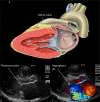The worldwide epidemiology of acute rheumatic fever and rheumatic heart disease
- PMID: 21386976
- PMCID: PMC3046187
- DOI: 10.2147/CLEP.S12977
The worldwide epidemiology of acute rheumatic fever and rheumatic heart disease
Abstract
Acute rheumatic fever (ARF) and rheumatic heart disease (RHD) are significant public health concerns around the world. Despite decreasing incidence, there is still a significant disease burden, especially in developing nations. This review provides background on the history of ARF, its pathology and treatment, and the current reported worldwide incidence of ARF and prevalence of RHD.
Keywords: epidemiology; group A streptococcus; rheumatic fever; rheumatic heart disease.
Figures










References
-
- Carapetis JR, Steer AC, Mulholland EK, Weber M. The global burden of group A streptococcal diseases. Lancet Infect Dis. 2005;5:685–694. - PubMed
-
- Marijon E, Ou P, Celermajer DS, et al. Prevalence of rheumatic heart disease detected by echocardiographic screening. N Engl J Med. 2007;357:470–476. - PubMed
-
- Carapetis JR, Hardy M, Fakakovikaetau T, et al. Evaluation of a screening protocol using auscultation and portable echocardiography to detect asymptomatic rheumatic heart disease in Tongan schoolchildren. Nat Clin Pract Cardiovasc Med. 2008;5:411–417. - PubMed
-
- Sadiq M, Islam K, Abid R, et al. Prevalence of rheumatic heart disease in school children of urban Lahore. Heart. 2009;95:353–357. - PubMed
LinkOut - more resources
Full Text Sources
Other Literature Sources
Medical

